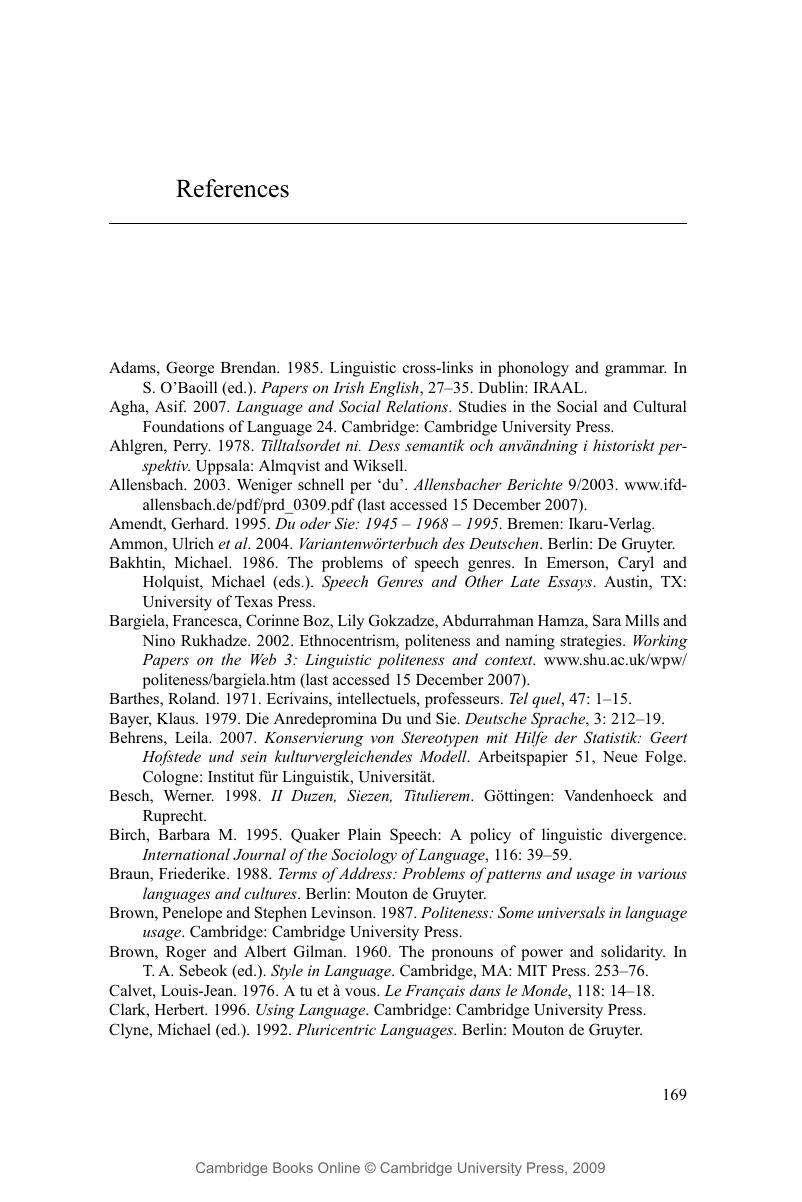Book contents
- Frontmatter
- Contents
- List of tables and figure
- List of abbreviations and transcription conventions
- Acknowledgements
- 1 Introduction
- 2 Multiple approaches for a complex issue
- 3 Contextualising address choice
- 4 Institutions, domains and medium
- 5 National variation
- 6 Conclusions
- Appendix A
- Appendix B
- References
- Index
- References
References
Published online by Cambridge University Press: 04 July 2009
- Frontmatter
- Contents
- List of tables and figure
- List of abbreviations and transcription conventions
- Acknowledgements
- 1 Introduction
- 2 Multiple approaches for a complex issue
- 3 Contextualising address choice
- 4 Institutions, domains and medium
- 5 National variation
- 6 Conclusions
- Appendix A
- Appendix B
- References
- Index
- References
Summary

Information
- Type
- Chapter
- Information
- Language and Human RelationsStyles of Address in Contemporary Language, pp. 169 - 176Publisher: Cambridge University PressPrint publication year: 2009
